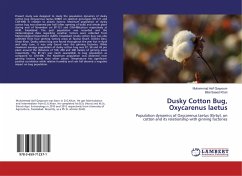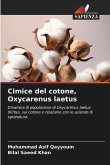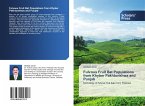Present study was designed to study the population dynamics of dusky cotton bug (Oxycarenus laetus KIRBY) on selected genotypes (BT-121 and CIM-496) in relation to abiotic factors. Maximum population of dusky cotton bug was observed per boll (after opening of bolls) and whole plant during end of November on BT-121 and CIM-496cotton respectively at AARI, Faisalabad. The pest population was recorded and the meteorological data regarding weather factors were collected from Meteorological Department (AARI), Faisalabad. Dusky cotton bug was also collected from four ginning factory areas at Taunsa Sharif, District Dera Ghazi Khan. Dusky cotton bug was found throughout the year but in April and early June, it was only found near the ginning factories. While maximum average population of dusky cotton bug was 97, 58 and 43 per plant around the distances of 100, 200 and 300 meters of ginning areas respectively. The BT-121 was much susceptible to bug population as compared to CIM-496. The Maximum population was observed near ginning factory areas than other places. Temperature has significant positive correlation while relative humidity and rain fall showed a negative impact on bug population.








